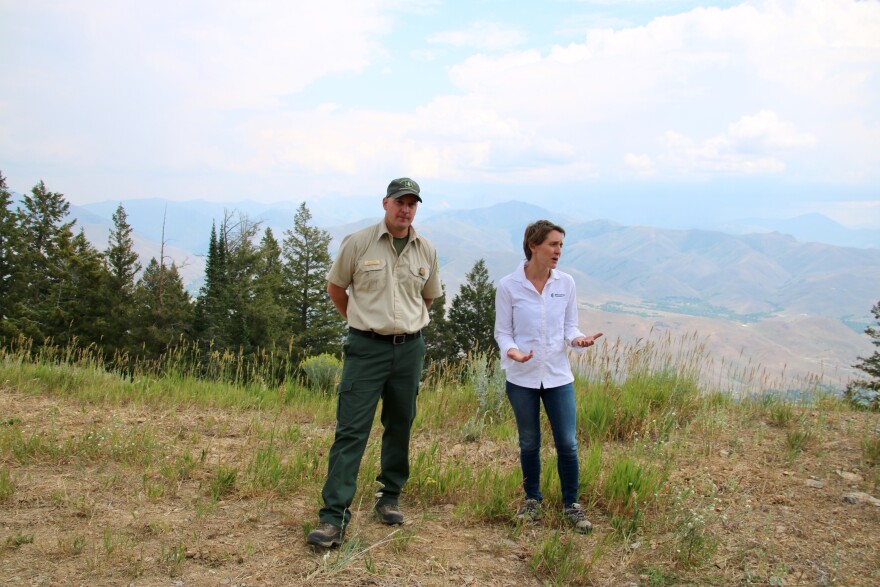Bald Mountain is the economic driver for the Wood River Valley, drawing more than 400,000 skiers each year to Sun Valley. But forest managers say the health of the mountain’s trees is at risk.
Last year, the U.S. Forest Service finalized a plan to treat more than 6,000 diseased and insect-infested acres on the mountain in the next decade.
Most of the trees are Douglas firs, and they’re infected by dwarf mistletoe and bark beetles.

“A lot of the trees are the same age, the same class, the same species, and so there’s not a lot of diversity,” said Zach Poff with the Ketchum Ranger District. “So it’s kind of like a pandemic is running through it.”
These are naturally occurring diseases, Poff said. Bark beetle is known to increase after fires, and in the past twenty years, two major blazes have surrounded Sun Valley Resort. That’s pushed the beetles to the remaining green areas. But whereas the beetles would typically cycle out after 10 years or so, Poff said, here they stayed, and multiplied.
"A lot of trees are dead or dying, and we're going to be seeing more and more of that," he said.
He estimated around two-thirds of the trees are not healthy. They’ve been stressed by a century of fire suppression, which has altered the composition of the forest, and persistent, ongoing drought. Those factors combined have made them more susceptible to disease.
The Forest Service, Sun Valley Resort, the National Forest Foundation and various community groups are working together on this major restoration project. The goal is to reduce fuel load and fire risk, strengthen forest health and keep the recreation opportunities on Bald Mountain in tact.

“A brown Bald Mountain is not acceptable to us,” said Dani Southard, the Northern Rockies manager for the National Forest Foundation. “We want the beautiful viewshed that we’ve always had, and we want that long into the future.”
The forest management work has been going on for a while, but this is the third year of the project in its current form, which involves thinning and removing dead trees on 10-30 acres each summer, then replanting more diverse species like lodgepole and ponderosa pines the following spring.
“They’re trying to thin that out, open it up, get rid of some of that dead and dying in that area,” Poff said, pointing to a patch beside a ski run where a tree harvester was loading trees.
Students from the community have also helped put insect deterrents on the trees to slow down beetle attacks.
Taking out the dead trees means less fuel for a wildfire to consume and it clears the way for firefighters to safely suppress fires on the mountain. It's also important to reduce hazards for recreationists.

Poff said the Forest Service would like to amp up the acreage it's treating each year. But there are constraints, like Sun Valley’s resort operations and impacts to wildlife. Then there's the sheer amount of wood that needs to come off the mountain — about 2,000 cords last year— and, for now, that's only good for fire wood.
“There’s only so much market for that,” Poff said.
Still, the project is in a race against time to get ahead of the problem, particularly the bark beetle, before it kills more trees.
From the top of Sun Valley, looking over the southern side of the resort, Poff pointed to patches of gray in an otherwise green hillside. Those trees were taken over by bark beetle in just three years, he said.
“There’s definitely a sense of urgency."
Find reporter Rachel Cohen on Twitter @racheld_cohen
Copyright 2021 Boise State Public Radio




